2019
Project Title: Training an Immuno-Army to Fight Childhood Brain Cancer
Abstract: Brain tumors or gliomas, are the most common and most fatal childhood cancers in the U.S. Gliomas are treated with surgery and chemotherapy but because it is impossible to remove/kill all of the tumor cells, the cancer always comes back. Molecules that work by activating the immune system are known as immunotherapy. Immunotherapy can be used to “wakeup” the immune system and tell it to destroy cancer cells. The aim of this project is to develop a network of polymer chains—a hydrogel—that serves as a local depot for the delivery of multiple immunotherapies, and can be injected directly into the brain after surgery to stop the tumor from growing and from recurring.
2018
Project Title: Engineered Nanofribrous Scaffold for Wound Healing Applications.
Abstract:Epidemiological studies suggest that more than globally 550 million people will suffer from diabetes by 2030. As a quarter of these diabetic patients is expected to develop diabetic wounds (e.g., foot ulcers) during their lifetime, there is an urgent need for development of new healing materials to prevent clinical complications. To help achieving the optimal healing environment and protect patients against major clinical implications, the proposed study seeks to develop a bio-inspired engineering approach to prepare scaffolds not only for treatment chronic diabetic wounds but also for healing of wide range of non-diabetic wounds including injury and bedsores.
2017
Project Title: Low Intensity Focused Ultrasound for Drug Resistant Epilepsy
Abstract: Focused Ultrasound Treatment for Refractory Epilepsy: An Efficacy Trial Epilepsy is one of the most common neurologic disorders, affecting 2.5 million Americans and 65 million people worldwide. Approximately 70% of patients with epilepsy achieve seizure control with medications, leaving 30% of patients with persisting seizures despite medication. Ongoing seizures can be very debilitating, and are often associated with significant morbidity and even mortality. There are very few new treatments, pharmacologic or non-pharmacologic, coming down the pipeline to address this often desperate, at-risk population. Despite this, the importance of reducing patients’ seizure burden remains high. Aside from epilepsy surgery, for which only a percentage of these patients are eligible, there are few other options to help reduce seizure frequency in this population. Neurostimulatory devices such as Responsive Neurostimulation (Neuropace) and Vagal Nerve Stimulation (VNS) have been shown to be of some benefit, though these are limited to small, specific patient populations and responses vary. Newer devices have been modeled on the success seen in movement disorders, such as Parkinson’s disease. One very successful approach for treatment of tremor is focused ultrasound. At higher intensities, focused ultrasound can ablate tissue, therefore it is also used to treat brain tumors. There is some evidence that low intensity focused ultrasound may be helpful in treating seizures. It has been shown to be safe in humans, and has proven neuromodulatory effects on human brain function as well. This idea of neuromodulation, or mechanical disruption of neural networks to treat disease, is accelerating quickly and data on such efforts are accumulating data rapidly. We propose a prospective interventional clinical trial using low intensity focused ultrasound to treat drug-resistant temporal lobe epilepsy.
2016
Project Title: Hospitalization at Home: The Acute Care Home Hospital Program for Older Adults
Abstract: Hospitals are the standard of care for acute illness, but hospital care is often unsafe, inaccessible, and expensive for older individuals. While admitted, 20% suffer delirium, over 5% contract hospital-acquired infections, and most lose functional status that is never regained. Timely access to hospital care is poor: many wards are overcapacity, and emergency department waits are protracted. Moreover, hospital care is increasingly costly. We propose a home hospital model of care that substitutes for treatment in an acute care hospital. Studies of the home hospital model have demonstrated that acute care can be delivered in the home with equal quality and safety, reduced cost, and improved patient experience. While this is the standard of care in several developed countries, only 2 small US-based non-randomized pilots have materialized. Our pilot innovates on prior home hospital models by translating biomedical device science into clinical workflows employing a randomized controlled assessment, virtual clinician visits, remote/wireless vital sign monitoring, patient physical activity and sleep monitoring, machine-learning predictive analytics, point-of-care bloodwork, and community health workers. Successful demonstration of the home hospital model will enable hospitals, accountable care organizations, and care networks to launch an evidence-based cost-effective medical service in the homes of acutely ill older adults.
2015
Project Title: Biomaterial drones: 4G technology to enhance treatment of cancer metastasis with minimal collateral damage
Abstract: Metastasis accounts for over 90% of all cancer associated suffering and death and arguably presents the most formidable challenges in cancer management. The central innovation and overall goal of this project is the development of fourth generation (4G) radiotherapy biomaterials to significantly enhance the treatment of metastasis at no additional inconvenience to cancer patients. The new 4G biomaterials are designed to simply replace the inert biomaterials (fiducials/spacers), which are currently routinely implanted to ensure spatial accuracy during radiotherapy. The new biomaterials specifically incorporate a payload of nontoxic targeted radiosensitizing gold nanoparticles (GNP), and immunoadjuvants in a biodegradable polymer matrix. Once in place, the 4G biomaterials controllably release the payload directly into the tumor as the polymer degrades. During radiotherapy, the released GNP will significantly enhance local tumor cell kill, and work with the released immunoadjuvant to prime a robust T cell response. A robust T cell response can kill metastatic cells distant from the irradiated site (abscopal effect), with major potential to help prevent cancer recurrence. Slow in-situ release of the payload will minimize systemic/overlapping toxicities, which are currently a critical barrier/concern with competing approaches. Overall, our technology could significantly enhance survival and quality of life for lung/pancreatic/prostate cancer patients.
2014
Hadi Shafiee, PhD
Project Title: A low-cost hand-held microchip device for rapid HIV detection and treatment monitoring through viral load measurement on paper with flexible electronics
Abstract: To increase access to HIV care and antiretroviral therapy (ART) worldwide and to improve treatment outcomes, there is an urgent need for significantly reducing the cost per HIV diagnostic test by developing innovative and inexpensive diagnostic tools. Despite the urgent need for viral load monitoring, there is currently no commercially available and inexpensive POC viral load assay. Here, building upon our prior expertise, we will use nano- and micro-scale approaches to develop a microfluidic device that achieves label-free viral load measurement. We will validate this device with HIV-infected patient samples. The underlying hypothesis of this proposal is that viruses can be selectively captured on the surface of microfluidic devices using anti-gp120/gp41 antibodies and detected using electrical sensing of the viral lysate. The proposed platform technology relies on three technological advances: (i) capture of multiple HIV-1 subtypes with high efficiency, specificity, and sensitivity on microchips, (ii) label-free electrical detection using a portable system, and (iii) paper-based microfluidic fabrication as an inexpensive, disposable, and mass producible method appropriate for POC diagnosis. In addition, such a platform technology has potential broad applications for other diseases such as influenza, herpes, hepatitis, malaria, and tuberculosis.
2013
Project Title: Disposable Chips to Detect Antiepileptic Drug Serum Concentrations at the Point of Care using Nanoplasmonic Platform
Abstract: Optimizing the effectiveness of antiepileptic drugs (AEDs) involves adjusting dosages and the timing of dosages to minimize side effects and maximize seizure control. Utilizing AED serum concentrations can guide this process, but obtaining blood tests is presently impractical due to the associated inconvenience (lab based detection) and costs, as well as the often long latency between side-effects and/or seizures and when blood tests are obtained. Here, we propose to develop a microfluidic based disposable AED detection that can be performed anywhere and automated to handle 10-100 μL of blood obtained with a finger-prick, such as used for blood glucose monitoring. The glass surface coated with gold nanoparticles is functionalized with anti-AED antibody for specific capture of AED molecules. Upon drug-Ab binding, a shift in the extinction intensity and wavelength spectrum would be seen due to localized surface plasmon resonance effect of gold nanoparticles. The proposed system consists of a portable spectrophotometer for detection and gives results in approximately 10 minutes. A version of this device could be made with read-outs that the patient or family member can monitor, to report to the physician or to implement actions that the physician provided them in advance.
2012
Project Title: BabySeq: A Pilot Project to Explore Genomic Screening of Newborns
Abstract: Genomic medicine has arrived and is rapidly being integrated into the practice of medicine. A multi-disciplinary team at Brigham and Women’s Hospital (BWH), supported through the NIH-funded MedSeq Project, is already on the leading edge of designing interpretational pipelines and physician reports in order to deliver the results of whole genome sequencing (WGS) in 200 adults, and has designed extensive qualitative and quantitative outcome studies to understand the downstream behavioral and medical consequences of implementing genomic medicine in this population. The next uncharted and highly controversial arena is whether WGS should be used to screen newborns in order to detect risks for future diseases. In this BRIght Futures application, we propose to use a randomized factorial design to gather critical preliminary data on the preferences of parents towards genomic screening of their newborns, and to conduct pilot sequencing and reporting of WGS results to the parents of 10 healthy newborns.



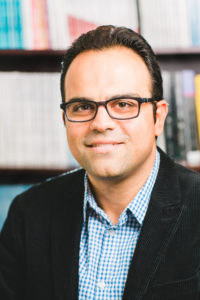







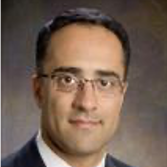








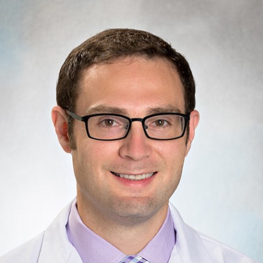


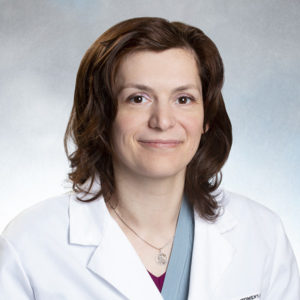





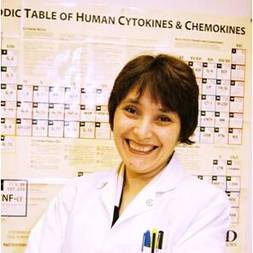


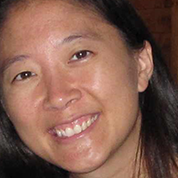





























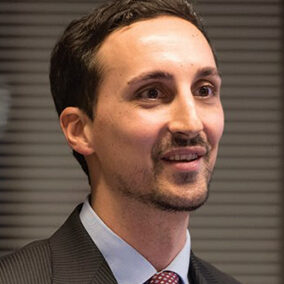 Giorgio Giatsidis, MD
Giorgio Giatsidis, MD





































